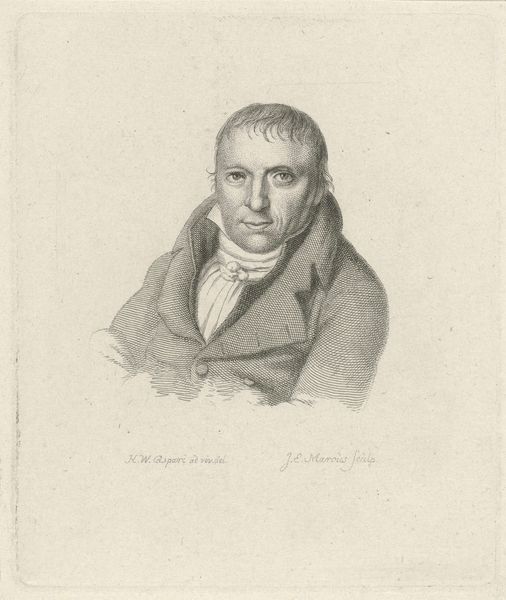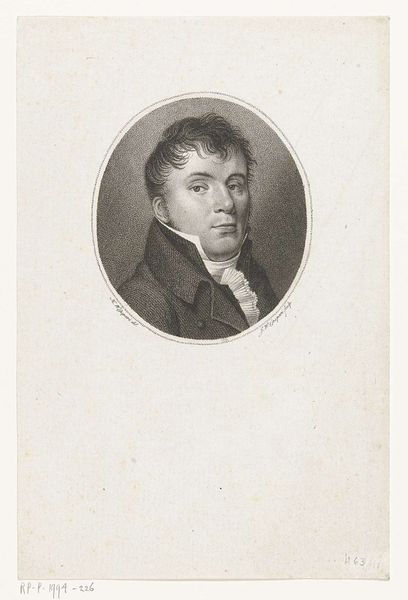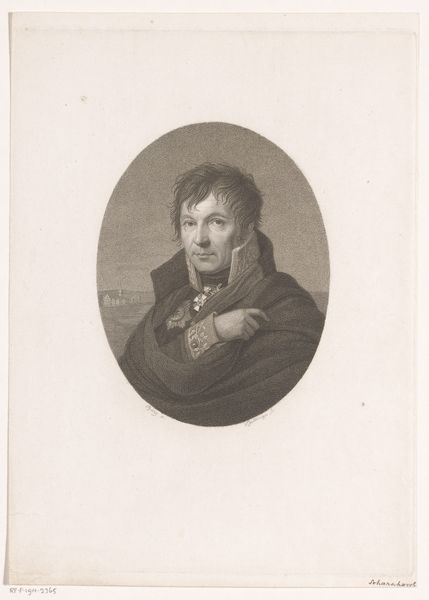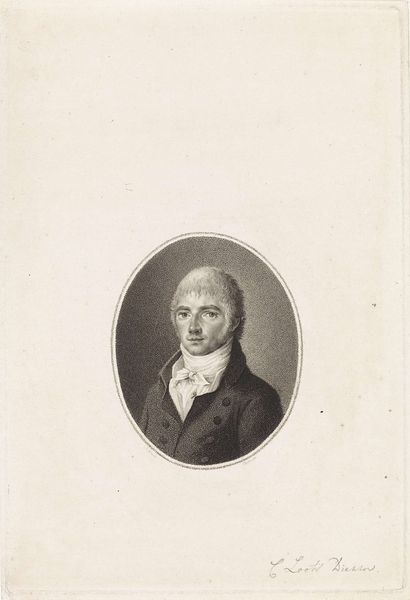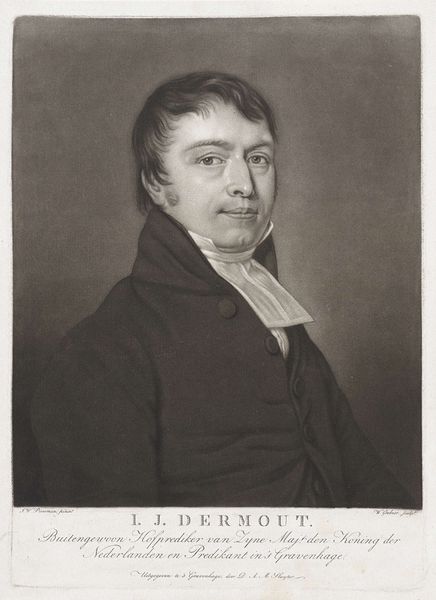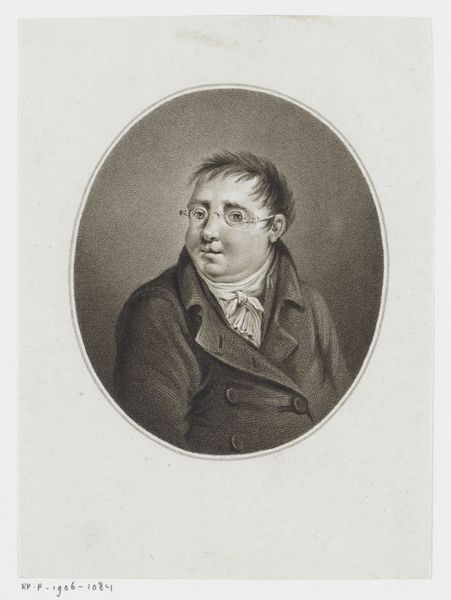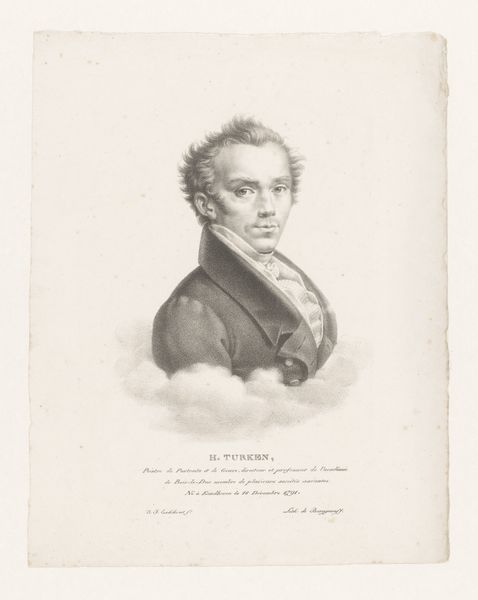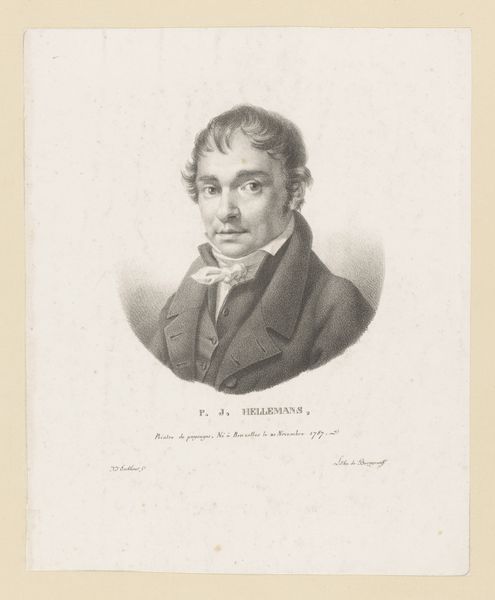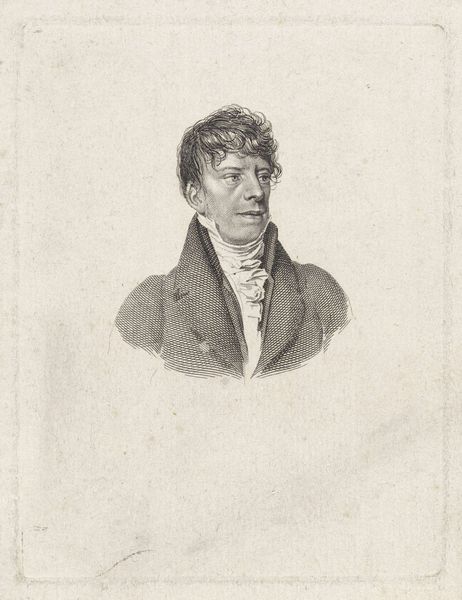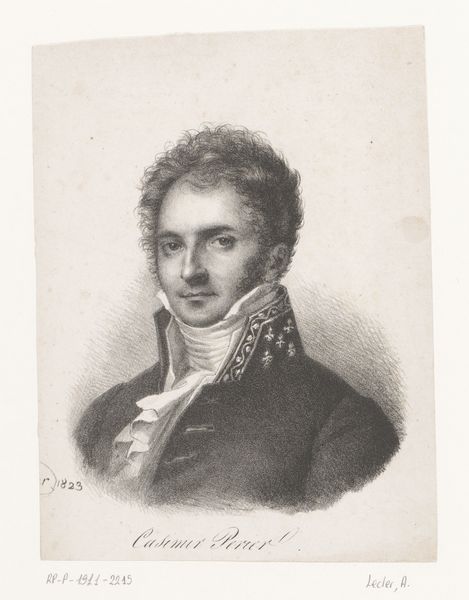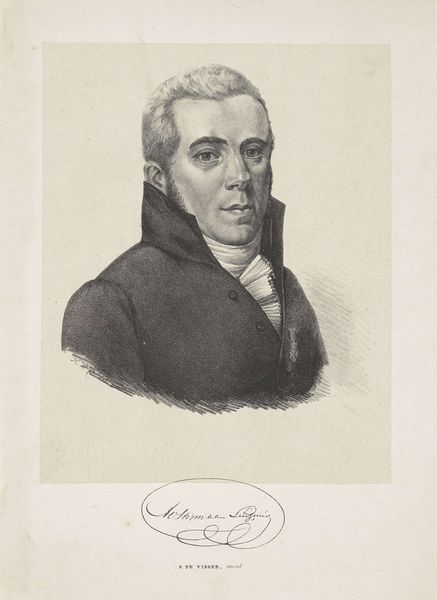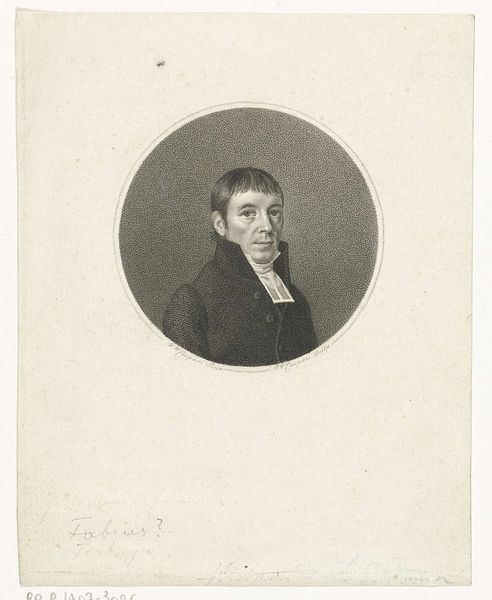
engraving
#
portrait
#
neoclacissism
#
old engraving style
#
form
#
line
#
engraving
#
realism
Dimensions: height 92 mm, width 71 mm
Copyright: Rijks Museum: Open Domain
Editor: So, here we have Jan Willem Caspari’s "Portret van Elias Annes Borger," created between 1789 and 1822. It's an engraving and the figure depicted has this intensely serious expression. It’s such a stark and focused image. What do you see in this portrait? Curator: The linear precision immediately strikes me. The crisp lines composing Borger’s form almost define the man. But beyond just realism, note how that starkness evokes the Enlightenment ideals of rationality and order—ideas literally etched into the lines. Look at the tight control in rendering his coat; it contrasts the more subtly rendered face, focusing our gaze. Do you find that interesting? Editor: I do. So you’re saying the details—like his clothing and intense gaze—are about more than just representation? Curator: Precisely! What emotional impact emanates from this composition, or from specific visual decisions? Caspari chose engraving to depict Borger, a medium enabling detailed reproduction and dissemination. What might that say about the subject’s place in society, his image as public property? Editor: Maybe it speaks to a desire to create a lasting, reproducible image, beyond just a painting for private viewing. Curator: Consider this engraving not only depicts Elias Annes Borger, but also reflects the values and ambitions of his era. These visual choices help us remember Neoclassical ideals of rationalism. Editor: It's fascinating to think about how a portrait, something that seems so individual, is also this carrier of cultural ideas. I see now that there's much more beneath the surface!
Comments
No comments
Be the first to comment and join the conversation on the ultimate creative platform.


